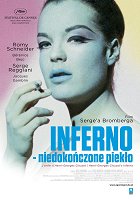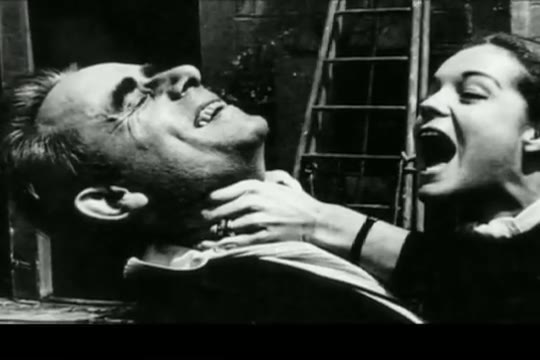Composer:
Bruno AlexiuCast:
Henri-Georges Clouzot (a.f.), Romy Schneider (a.f.), Serge Bromberg, Bérénice Bejo, Jacques Gamblin, Dany Carrel, Maurice Garrel, Costa-Gavras, Bernard Stora (more)VOD (1)
Plots(1)
In the 1950s and '60s, Henri-Georges Clouzot was one of France's most acclaimed and successful filmmakers, a director who enjoyed massive international success with LE SALAIRE DE LA PEUR (aka THE WAGES OF FEAR) and LES DIABOLIQUES, and his gift for generating tension and suspense onscreen earned him the nickname "the French Hitchcock." In 1963, Clouzot began work on a project called "L'Enfer" (aka "The Inferno"), a tale of jealousy that leads to madness, and the filmmaker was promised all the time and resources he needed for the picture. However, while the director was meticulously prepared when shooting began, after only three weeks the production was halted and never resumed; Clouzot would complete only two more films before his death in 1977. Filmmakers Serge Bromberg and Ruxandra Medrea try to answer the question of what happened to a project so full of promise in L'ENFER D'HENRI-GEORGES CLOUZOT (aka HENRI-GEORGES CLOUZOT'S INFERNO), a documentary which looks into the shadowy history of this lost film. Including interviews with members of the cast and crew (among them production assistant Costa-Gavras, who went on to a distinguished career of his own) and excerpts from the surviving footage (seen by the public for the first time here), the film tells the tale of how a great director ran afoul of his own demons while making a movie about a troubled man. HENRI-GEORGES CLOUZOT'S INFERNO received its world premiere at the 2009 Cannes Film Festival. (official distributor synopsis)
(more)Videos (1)
Reviews (1)
The documentary about Henri-Georges Clouzot's Inferno is, even in a figurative sense, true hell. What all didn't happen? The famous director had a hit in the 60s with the film The Truth (starring Brigitte Bardot). The stripped Brigitte Bardot impressed the gentlemen at Columbia so much that Clouzot got an unlimited budget for his next film. He chose Romy Schneider as his new muse, at that time looking for a place in Western cinema (meaning as far away west as possible from Germany and Austria). Romy was young and willing to sacrifice much for an artistic project. But the problem arose when the director stopped perceiving reality and kept trying new technical methods and kept reshooting. The story was meant to be a simple tale of jealousy, but the visions of the husband in moments of rage were meant to revolutionize film. How was that supposed to happen? The director tried to translate new shapes and colors derived from the then-modern expressions of creative art into the film. He also wanted to work with sound in a new way. And, of course, combine black and white and color film. Unfortunately, he was too demanding on the actors and creators around him, he was notorious for his dislike of taking Sundays off, he wanted to work practically non-stop, he did not pay attention to the real organization of his work, and it was only a stroke that finally saved him from this obsession. The protagonist Serge Reggiani left the shoot due to sheer exhaustion, while his replacement Jean-Louis Trintignant refused to take part in such a shoot. After the filming, the legend remained. Although Clouzot did make some references to what Inferno inspired in his artistic conception in his last film, La Prisonnière. The original script was bought out after his death and produced under the same title in 1994. For those interested in Romina, this documentary is of special value because it charts an otherwise lost time on the great European actress' journey to her imaginary peak.
()


